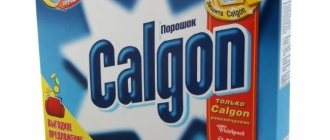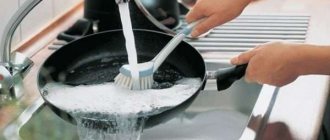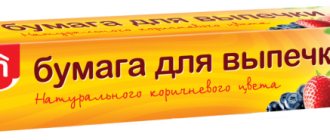Stainless steel cookware is rightfully considered one of the simplest and most convenient to use - no strict rules need to be followed either when cooking or washing. However, often on its bottom and walls one can gradually notice defects: gradually “growing” spots and a “rainbow” appearing. Many consider them a marriage, but is this really so?
There are spots on the bottom of the pan - as if it is oxidizing, why?
71 answers
Last - June 03, 10:30 Go
Lyalya
Guests, I have the same story with stainless steel. I'll listen to what they say
you know, no one answered here, I scoured the Internet and found a way to remove this *** - I rubbed it with lemon juice concentrate! On one pan it went away, because the stains are new, but on the second there are not very old stains! Maybe it will help you !Good luck!
Guest
I bought a 7-liter saucepan from Gurman Pro Russia. I welded it twice and the bottom started to streak like when welding iron. What to do? A saucepan costs 4,350 rubles.
Natalia
My story: I bought a Gurman Elite pan for porridge, the porridge turns out delicious - simmered, almost doesn’t stick... I fell in love with this stainless steel and changed all the enamel pans to Gurman stainless steel (Russia!).... There are no problems when cooking porridge, just add salt to the hot mixture and stir...
but yesterday I set the vegetables to boil and after cooking and washing the pan I saw rainbow stains... Why do they appear? Reviews on Gourmet cookware are 95% positive... And salt has nothing to do with it, because... I didn’t salt the vegetables (carrots, potatoes)... and the stains felt like they were coming into contact with the bottom of the pan..
Question: why do stains appear in high-quality stainless steel (I didn’t see this in cheap Ikeevsk ones)... By the way, LEMON really helped, THANK YOU!
Pinocchio
There is no need to cook khimar in them!
Natalia
My story: I bought a Gurman Elite pan for porridge, the porridge turns out delicious - simmered, almost doesn’t stick... I fell in love with this stainless steel and changed all the enamel pans to Gurman stainless steel (Russia!).... There are no problems when cooking porridge, just add salt to the hot mixture and stir...
but yesterday I set the vegetables to boil and after cooking and washing the pan I saw rainbow stains... Why do they appear? Reviews on Gourmet cookware are 95% positive... And salt has nothing to do with it, because... I didn’t salt the vegetables (carrots, potatoes)... and the stains felt like they were coming into contact with the bottom of the pan..
Question: why do stains appear in high-quality stainless steel (I didn’t see this in cheap Ikeevsk ones)... By the way, LEMON really helped, THANK YOU!
Lyalya
Spots began to appear on the bottom of my pan - as if they were oxidizing when I rubbed them - they seemed to rub off a little - but there remained rainbow-colored streaks and traces from these stains, the pan is stainless steel with a shiny bottom..
why does this happen? After washing, I wipe it dry and put it in the closet, put the lid on top, but not tightly...
Maybe you need to store the lid separately from the pan? Or maybe it’s because of the dishwashing detergent? Before this, I also ruined a stainless steel pan with a matte bottom - it became covered in stains and began to smell unpleasantly of iron... Tell me what could be the matter?
Sveta
I also have Gipfel, after the first time stains appeared, I ran to return it, but the sellers said that I washed it poorly. In general, they wiped off my pan; the napkin was all black. Now this is my favorite utensil and has been with me for almost 6 years. I bought a stainless steel saucepan from them recently, after the oven, rainbow spots also appeared, I googled it because of overheating. I didn’t run anymore) I wiped it off myself)
ON
Tell me, please, what did you use to clean it off?
Marina
Definitely, there should be no streaks or stains! Low-quality raw materials are used for production. What we want - the time for money has come. No one thinks about health. Lemon and vinegar are only external signs that are removed. The main thing is inside.
Cheerful Khantymansi woman
What the seller said is absolutely correct. We act like Russians. First we do it, and then we start reading the instructions. I advise you to re-read it, normal manufacturers write about this. Indeed, all it takes is SALT, no need to throw it into cold water, but when it boils, add salt.
Guest
I carefully read all the comments, but it’s not clear whether I should hand over the pots if the spots on the bottom are not removed after lemon juice? It looks like corrosion. I used it once to prepare a marinade.
Cheerful Khantymansi woman
What the seller said is absolutely correct. We act like Russians. First we do it, and then we start reading the instructions. I advise you to re-read it, normal manufacturers write about this. Indeed, all it takes is SALT, no need to throw it into cold water, but when it boils, add salt.
Daughter of the Proletarian
The seller told me that there is no need to throw salt into boiling water, it leaves such traces. What you need in the cold.
Guest
Or is it the other way around, damn it?!
Cheerful Khantymansi woman
What the seller said is absolutely correct. We act like Russians. First we do it, and then we start reading the instructions. I advise you to re-read it, normal manufacturers write about this. Indeed, all it takes is SALT, no need to throw it into cold water, but when it boils, add salt.
Guest
I carefully read all the comments, but it’s not clear whether I should hand over the pots if the spots on the bottom are not removed after lemon juice? It looks like corrosion. I used it once to prepare a marinade.
Source: https://www.woman.ru/home/medley9/thread/3996239/
Care instructions
It’s unlikely that the prospect of regularly carrying out general cleaning of pots is exciting. Those people who do not want to waste time and energy on cleaning dishes need to learn how to properly care for them . Experienced housewives advise:
- Wash dishes immediately. In order for the dishes to be better preserved and not lose their original shine, it is necessary to wash them immediately after use. You should not leave pots with food residues, especially if they are burnt. If there is absolutely no time, it is recommended to soak the pan. Once free, carefully wash the surface with soft detergents and sponges.
- Use purified water. The water coming from the tap contains many components that settle on the walls of the dishes, forming a coating. To protect pots from salt formations and scale, it is recommended to use only filtered water.
- Do not expose to overheating. Do not keep empty pots or pans on the fire for a long time. This leads to overheating of the surface and rainbow spots begin to appear on the bottom.
- Wipe the dishes dry. After washing, all stainless steel utensils should be wiped dry with a soft towel. This will protect the surfaces from streaks.
- Do not expose to temperature changes. Stainless steel can withstand both low and quite high temperatures. However, such dishes do not like sudden changes at all. Therefore, you should not pour cold water into a hot frying pan or immediately put a pan taken out of the freezer on the fire. Such temperature changes can lead to surface deformation.
Dishes. Stains on stainless steel
25 November 2022 17:09
// Tips for buyers
A few days after purchase, stains appeared on the bottom of a seemingly stainless pan? So that the joy of the purchase does not give way to disappointment, let's figure out what it is - a manufacturing defect, a low-quality product, or the consequences of improper use?
We want to reassure you right away, this is not rust. Such marks are the result of other, also natural chemical processes, and in this case the cost of the product will not in any way solve the issue of the appearance/non-appearance of stains in your favor. A little theory. Rust appears when metal comes into contact with water, and to start the chemical process, the metal product simply needs to be in moist air. To protect the metal from corrosion, more than a century ago they learned to coat the surface of cookware with special compounds - such cookware is known to us as enameled cookware. Now the choice of protective substances is much wider, but we are talking about a different method. For a long time now, for the manufacture of dishes, they have been using not “pure” metal, but special alloys: iron + additives that make the alloy more ductile, and more durable and resistant to rust. The alloy is supplemented with chromium and nickel in various mass fractions, and the result is alloy steel, which does not react with water and shines beautifully.
Due to the presence of chromium and nickel inside, under the influence of oxygen, the surface of the alloy is covered with an oxide layer invisible to the eye
, it protects the metal structure from external factors. A huge advantage of this oxide layer is its ability to self-heal.
When we scratch dishes, the oxide film is erased, but instantly appears again, because the contact of chromium/nickel with oxygen did not stop. Therefore, neither cracks, nor scratches, nor chips will lead to the appearance of pockets of corrosion.
However, we recommend mixing food and cleaning dishes with plastic kitchen utensils rather than metal ones.
The appearance of stains on stainless steel pans is caused by other chemical processes, each of which will be discussed separately, since the nature of their occurrence is different.
If rainbow or bluish-violet stains that do not have a geometric shape appear at the bottom of the pan, you know that you have overheated the pan. Prolonged exposure to high temperatures (above 100°) leads to increased formation of a protective film; it eventually thickens so much that it becomes noticeable and displaces the natural “chrome” shine.
This is not a defect: they do not affect the functionality of the product or the taste of the prepared dishes.
It is not recommended to remove such stains: they can only be sanded aggressively (for example, with fine sandpaper), but such cleaning will make the already problematic areas too thin. The ideal solution is to accept existing stains and simply not leave new pans empty on the fire.
Small light spots are a consequence of the deposition of calcium salts on the walls and bottom of the dishes (popularly known as scale)
. When boiling, tiny particles of salts settle on microscopic irregularities that appear, for example, when washing with a sponge. Gradually attaching to each other, the spots increase in size. The manufacturer recommends adding even ordinary table salt only to hot water with stirring so that the grains dissolve immediately.
By adding salt to cold water, salt particles have time to attach to the bottom and walls of the pan.
In addition, chlorine, which is part of the salt, is a corrosion activator, so it is advisable to salt the finished product, thereby reducing the time of contact of the steel with the source of chlorine.
Getting rid of such stains is very easy! A hard sponge or ordinary table vinegar will help you. After 5 minutes of exposure to acetic acid, the stains will disappear before new ones form. It won't harm the metal. In addition to calcium salts, unfiltered tap water also contains silicon salts. It is they, settling at the bottom of the pan, that provoke the appearance of small dark dots
(from brown to black). If they are not removed in time, over time the dots will become noticeable red spots, which are mistaken for rusting of the metal.
A solution of the same acetic acid will help remove a scattering of such stains. We do not recommend using sandpaper as in the previous case: the surface will become even rougher and the number of new stains will increase.
If vinegar just can't get rid of stains on the bottom of your dishes, you may actually be dealing with rust. In this case, we can talk about a defective product, but only if you did not wipe off the entire oxide layer with iron wool. In this case, the metal will remain unprotected and will rust very quickly. Proper use to all!
Source: https://tv-stok.ru/blog/sovety-pokupatelyam/posuda_pyatna_na_nerzhaveike/
What not to do
In order for stainless steel cookware to last a long time and continue to delight you with its shine, you need to remember a few simple rules . When purifying a unique alloy, it is prohibited:
- Use hard washcloths. The surface should not be rubbed with a metal scraper or hard sponge surfaces. This will lead to irreversible damage to the surface.
- Use abrasive substances. We are talking about powders, sand, undissolved salt. Such substances can leave scratches on the surface of steel. The dishes will lose their appearance.
- Polish in different directions. When sanding, be sure to respect the factory polish lines. Otherwise, very deep scratches will appear on the surface of shiny pans.
- Use substances containing chlorine. It is chlorine that is the worst enemy of stainless steel. It can provoke oxidation, resulting in rough scratches on the walls of the pan.
Are stains on the bottom of a stainless steel pan a defect?
05.06.2019
Sometimes the joy of a successful purchase quickly gives way to disappointment. This also happens with kitchenware and utensils, and not even with the cheapest ones. For example, many housewives who are sensitive to cleanliness are very familiar with stains on the bottom of a stainless steel pan.
At the same time, some immediately consider this a defect and rush to return the goods, others try to get rid of them on their own, and still others... do not encounter such a situation at all.
Let's figure out what these marks on the metal are, and whether they are a sign of low quality cookware.
Why doesn't stainless steel rust?
Let's start with the basics. Any steel is not just one metal in its pure form, but an alloy consisting of an iron “base” and various additives, and not always metal ones.
In fact, additives make it possible to give the alloy the necessary properties, for example, strength, ductility and resistance to rust. Metal rusting is a natural chemical process that occurs when iron comes into contact with water.
Moreover, it is not necessary to constantly pour water on a metal product, since its smallest particles are always contained in the air.
In order to prevent contact of steel with moisture, its surface is covered with varnishes, paints and enamels.
If you have an old enamel plate or pan in your household, you will notice that the place where the enamel broke off due to an impact quickly begins to become covered with a brown coating.
There is another approach - you can act “from the inside”, that is, add metals to the alloy that do not react with water. These include, for example, chromium and nickel. Actually, it is to them that stainless steel cookware owes its beautiful shine.
It works as follows: under the influence of atmospheric oxygen, a thin oxide film is formed on the surface of the alloy.
It is not completely transparent, but due to its extreme thinness it is not possible to see it, so it seems to us that the metal is not covered with anything.
The film has the property of self-healing (contact with oxygen does not stop for a second), so even deep scratches do not become a source of rust.
How then did stains appear on stainless steel?
Staining stainless steel pans is another chemical process. Moreover, even the most expensive and high-quality products are susceptible to it.
The spots can be of different colors, so it’s worth talking about them separately.
Rainbow
Over time, large, shapeless rainbow or blue-violet stains may appear at the bottom of the pan. They appear under the influence of heat: when heated above 100°, the formation of a protective oxide layer is greatly accelerated. Over time, it thickens so much that it begins to cover the natural shine of the metal. This is not a defect: they do not affect the properties of the product itself or the taste of food.
Such stains can only be removed by sanding or polishing (for example, with fine sandpaper), but this is not advisable, since constant aggressive cleaning will simply make the problem areas very thin, and eventually the pan will leak. It’s best to just accept their presence, and to prevent them from appearing in new dishes, just don’t leave them empty on the fire.
Light
Small light spots are also not a defect. This is ordinary scale, that is, a precipitate of calcium salts. They are found in tap water and settle to the bottom when boiling.
Since the surface of steel appears perfectly smooth only to the eye, tiny particles of salt cling to microscopic irregularities (for example, scratches formed when washing with a sponge) and gradually attach to each other, which is why the specks seem to increase over time.
Getting rid of them is very simple - just thoroughly rub the problem area with a hard sponge.
Types of pollution
During long-term operation, even such an alloy that is resistant to external influences may become contaminated . The most common defects that occur are:
- Limescale. If ordinary tap water is often boiled in a saucepan, then some impurities may settle on the walls of the container. The shade and chemical composition of such scale depends on the region and water purification technology. Typically, ring-shaped patterns of light brown or reddish color appear on the bottom.
- Rainbow spots. Stainless steel cookware has a thin layer of inert oxide film. When the cookware is heated above 100°C, this film begins to thicken. When the layer expands 10 times, it will take on a bluish or rainbow color. This coating does not in any way affect the performance properties of the cookware. To avoid such an unaesthetic defect, do not heat an empty container on the stove.
- Yellow plaque. The appearance of a yellow sticky coating is dictated by the accumulation of oil deposits. During cooking, tiny drops of fat settle on the outer and inner surfaces. Over time, an unpleasant sticky layer appears.
- Black soot. This layer (most often covering the outside of the cookware) is dictated by the long-term accumulation of oil droplets. Black carbon deposits form after many years of improper use of cookware. It is a rigid frame, which is very difficult to fight. The appearance of black deposits inside the pan is usually caused by food burning.
How to wash stainless steel dishes using your grandmother's experience
You can clean stainless steel cookware from dark stains, carbon deposits and other contaminants using improvised means that will ensure the most delicate effect.
Universal solution: boiling
Boiling is the most effective way to clean stainless steel kitchen utensils. This method will successfully handle:
- soot;
- scale;
- greasy yellow coating;
- other complex contaminants.
If you need to clean the inside of a pot or pan, three simple steps will help.
- Prepare the composition. Fill the contaminated dishes with a special solution.
- Put on fire. Wait for it to boil, boil for 15 minutes.
- Remove from heat, cool. Wash the product with detergent.
If you need to clean spoons, forks, as well as frying pans, pots, bowls and teapots not only from the inside, but also from the outside, follow the three-step instructions.
- Preparation. Pour the solution into a large heat-resistant container (you can use a bucket).
- Boiling. Immerse the dishes in the mixture and boil for five to 15 minutes.
- Rinse. Remove from heat, cool, and wash items with detergent.
How to prepare the composition for boiling? If the contamination is not severe, you can boil the dishes in clean water. To enhance efficiency, it is worth making a solution (of your choice):
- dishwashing detergent - two to four tablespoons per liter of water;
- vinegar - combine with water in a 1:1 ratio;
- laundry soap and PVA glue - dissolve a third of a bar of soap and a tablespoon of glue in 4 liters of water;
- soda ash, household soap and silicate glue - 100 ml of glue and soda each, a bar of soap per 10 liters of water.
Instead of dishwashing detergent, you can use liquid or crushed laundry soap in the same proportions.
It will cope well with light stains and remove “boiling apple” blackness. You need to peel the sour apples, add water, and boil stainless steel products in this solution for five to seven minutes. Instead of fruit peels, you can use potato peelings or finely chopped onions.
Anti-carbon pastes
Peculiarities. You can remove carbon deposits from a stainless steel pot or frying pan using homemade pastes.
Components to choose from:
- crushed activated carbon (30-40 tablets), mixed with water to a paste consistency;
- ground coffee beans mixed with water to form a thick paste.
Application
- Apply the composition in a thick layer to the contaminated areas.
- Wait 20-30 minutes.
- Wash the device with regular detergent.
Liquids from white deposits and scale
Peculiarities. You can remove scale from a stainless steel kettle using simple products. The concentration of citric acid is adjusted depending on the degree of contamination: from 15 to 50 g per liter of water. Turks and samovars made of stainless steel can be washed in a similar way.
Components to choose from:
- vinegar;
- citric acid solution;
- Coca Cola.
Application
- Pour the product into the “affected” product.
- Bring to a boil and simmer over low heat for a couple of minutes.
- Drain the mixture and add clean water.
- Boil and wash with regular detergent.
Methods for processing forks and knives
Four products will help clean stainless steel cutlery from black deposits and other contaminants.
- Vinegar or lemon juice. Apply the product to a soft cloth and wipe the devices. After half an hour, rinse with running water and wipe dry.
- Ammonia. High concentrations of ammonia are harmful to stainless steel products. However, if you mix five to ten drops in a liter of water, you can get a solution that will perfectly clean cutlery. It is enough to rub the products with it and then wash with regular detergent.
- Non-abrasive toothpaste or tooth powder. Using a soft cloth, wipe the devices and wash with running water.
- Mustard powder. Dilute the product with a small amount of warm water to obtain a creamy mass. Immerse cutlery in the composition for a quarter of an hour, then rinse with running water.
The final touch: adding shine
Polishing stainless cookware to a mirror shine will not only return the items to their original appearance, but will also increase the service life of the appliances. To carry out the “procedure”, you need to treat the device with a soft sponge moistened with:
- vinegar;
- a solution of lemon juice (a tablespoon per glass of water);
- commercial steel polish.
After grinding, you need to rinse the treated dishes with running water and wipe dry. To give stainless steel kitchen utensils a glossy shine, you can also wipe the items with raw potato wedges.
Chemical polishing of cutlery will help get rid of yellow deposits and other contaminants. However, this method can only be carried out by professionals: it cannot be used at home. Its essence is that the dishes are immersed in a special chemical composition, which smoothes the surface of the metal, removing scratches and removing dirt.
When thinking about how to clean stainless steel cookware, you need to take into account not only the features of caring for this metal, but also the fact that kitchen utensils come into direct contact with food. Therefore, it is advisable to give preference to environmentally friendly methods, and if you use household chemicals, then only those that are intended for cleaning dishes.
Video on the topic











